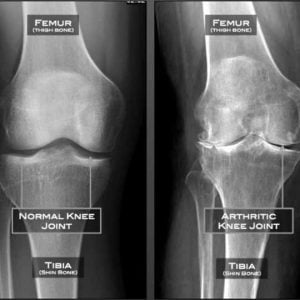
What is the best way to reduce joint pain without drugs or surgery?
Pain is an essential part of being human. Think of it like your body’s own personal alarm system. If something goes wrong, pain can help signal the rest of your body to stop what you’re doing before further injury occurs. Pain usually falls into one of two main categories, acute and chronic.
Acute pain
Acute pain is a sudden onset type of pain that can range from mild to severe in nature. This is the type of pain that occurs when you touch a hot surface, get a paper cut, or stub your toe. This type of pain is common in joints after an injury.
CHRONIC PAIN
While acute pain is to be expected after any injury, it is not uncommon for patients to experience chronic (or long-lasting) pain after an injury. Conditions that cause pain in the joints such as osteoarthritis or degenerative joint disease can cause discomfort for weeks, months, or even years after an initial injury.
Therapy Options
Conventional options for pain include prescription drugs and surgery. While it’s true that prescription drugs can help provide temporary relief of pain, they do not address the root cause of the pain. Prescription “painkillers” are also highly addictive, and there is always a risk that a patient may develop an addiction or dependence on these medications.
Similarly, surgery may be an effective therapy for pain, but it is not without risk. Even with the recent advancements in medical and surgical technology, any patient undergoing a major surgery has the potential to experience side effects such as infection, blood clots, nerve damage, and more. There’s also post-surgical pain, downtime, and rehabilitation to consider.
The good news is that there are some amazing, non-surgical alternatives to help alleviate your pain! Our Regenerative Medicine therapy options can help harness your body’s own healing ability to help chronic pain at the source. These therapies can help reduce painful joints caused by conditions like:
- Osteoarthritis
- Stiffness
- Injuries
- Joint degeneration
- Arthritis
- Degenerative Joint Disease
- & more!
If you’re looking for joint pain therapy options in Orlando, Florida, we can help! Our team of licensed medical professionals are experts at delivering safe and effective therapies. Not only can these therapies help relieve your pain, they can also help you achieve peak athletic performance.
Schedule a FREE Regenerative Medicine Consultation Here
Additional FAQs
Can PAIN OCCUR IN A JOINT without an injury?
Painful joints can occur with or without an accompanying injury. For example, causes of pain in a joint unrelated to an injury include osteoarthritis, Lyme disease, fibromyalgia, hypothyroidism, arthritis, and more.¹
Joint vs. muscle pain: what’s the difference?
Since these areas are often used together to achieve the same movements, it can be difficult to pinpoint the difference between joint and muscle pain. According to Alexandra Villa-Forte, MD, MPH, “pain that seems to be coming from a joint sometimes originates in a structure outside of the joint, such as a ligament, tendon, or muscle,”² which is why it is important to see a doctor for an accurate diagnosis if you are experiencing chronic pain.
Will my joint pain go away on its own?
It is possible that mild to moderate pain will go away on it’s own with proper home care. Nevertheless, you should make an appointment to see a doctor if your joint pain is caused by an injury and/or is accompanied by swelling, redness, tenderness or warmth around the joint, or inability to use the joint.³
REFERENCES
¹ Mayo Clinic Staff. (2021, March 16). Joint Pain Causes. Mayo Clinic. Retrieved October 25, 2021, from https://www.mayoclinic.org.
² Villa-Forte, A. (2021, February 1). Joint Pain: Single Joint – Bone, Joint, and Muscle Disorders. Merck Manuals Consumer Version. Retrieved October 25, 2021, from https://www.merckmanuals.com.
³ Mayo Clinic Staff. (2021, March 16). When to See a Doctor. Mayo Clinic. Retrieved October 25, 2021, from https://www.mayoclinic.org.
